Digital Geometry Processing
Exercise9-Remeshing
Heng Liu, liu@inf.unibe.ch
Computer Graphics Group
Remeshing

Remeshing Operations
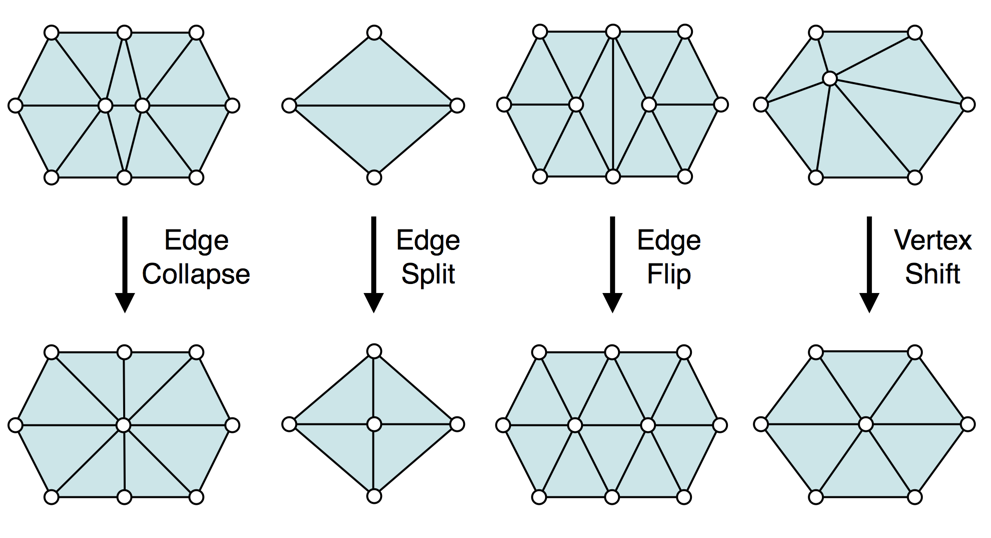
Task 1: Split long edges
- Split edge if it is longer than 4/3 of the target length L
- Insert a new vertex in the midpoint
- Interpolate the normal and target_length_ for the new vertex

Task 2: Collapse short edges
- If edge is shorter than 4/5L, consider collapse
- Do not collapse boundary to interior
- Check which half-edges are collapsible
- If none collapsible: don’t collapse
- If one collapsible: collapse it
- If two collapsible: collapse lower valence vertex into higher valence vertex
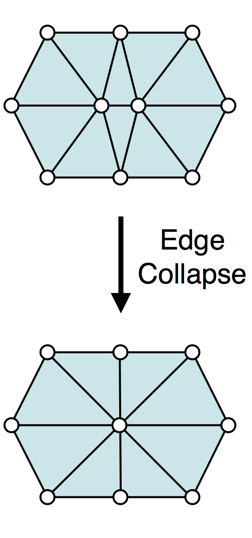
Task 3: Equalizing valences
Ideal valence
- boundary: 4
- interior: 6
Valence deviation sum \[\sum{(valence(v_i) - ideal\_valence(v_i))^2}\]
Flip if it decreases valence deviation
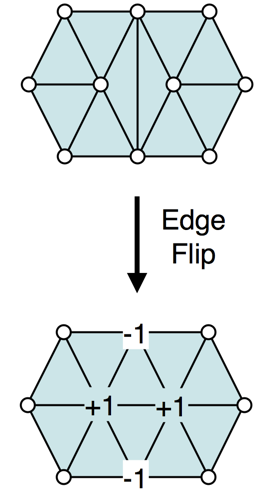
Task 4: Tangential smoothing
- Compute uniform Laplacian
- Use tangential component to move vertex.
- To get the tangential component
- Project Laplacian to the normal
- Subtract this component from Laplacian
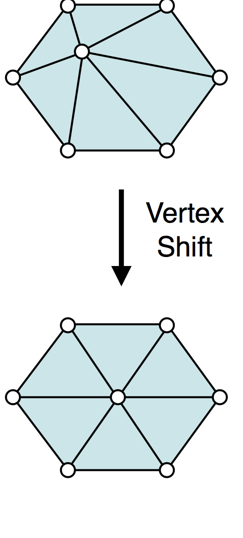
Task 5: Calculate target length
Target length can be computed adaptively
Scale initial target_length_ by \(k_{max}\) \[k_{max} = H + \sqrt{H^2 - K}\]
Apply several iterations of uniform smoothing on target_length_
Rescale target length such that its mean over all the vertices is equal to user-specified value
Operation check
check if edge is deleted
- edges are marked deleted when operations request deletion, but only deleted when garbage_collection is called.
check if halfedge collapsible
check if edge is flippable
Results: Valences
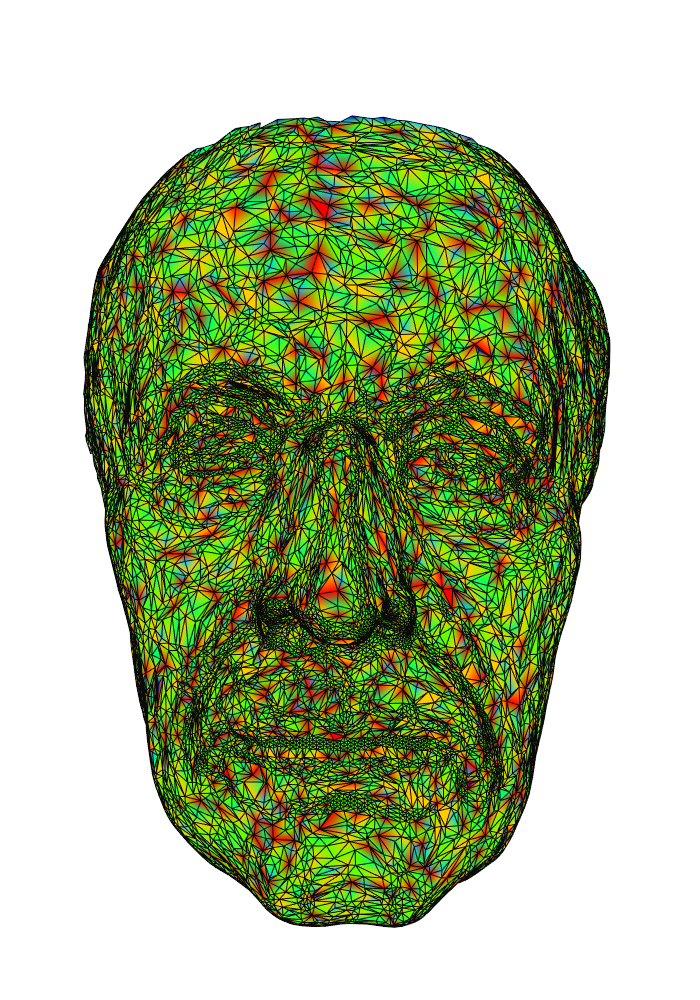

Results: Egde length

